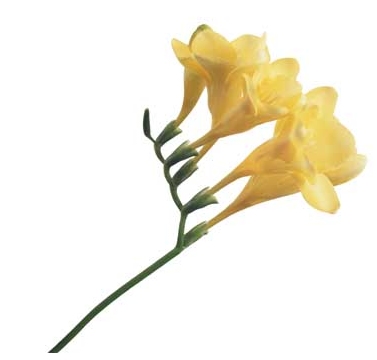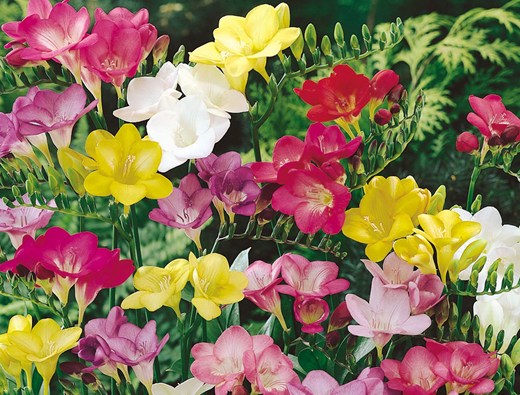Categories
Calendars
Guides
Reviews
Archive
Gallery
Articles
Ask Our Gardening Expert
Freesia
They were originally from Africa and most species are native to the Cape Province. Typically, the flowers are white or yellow and the blooms are borne as racemes. They come in a variety of colours, through orange, gold and red to pinks, mauve and purple. Freesias grows from a delicate corm, first producing sword shaped leaves about 30 cm long and then flowers of about the same height. The flowers grow along one side of the stem, bending at right angles to be almost parallel with the ground. Its light, sweet floral scent is used in soaps and perfumes.
Racemes grow from a right angled stem
How to grow Freesias
Plant the corms about 5 cm deep and 5-10 cm apart in a sunny position in free-draining soil to which has been added organic material. Plant the corms in late summer or autumn, pointed end upwards and water the area thoroughly. The corms will root and develop leaves through the autumn and winter and flowers will appear in spring. Cut the flowers as needed.
Freesias come in an assortment of colours
After blooming has finished, leave the plants until the leaves dry and die down, the corms need to restore energy. They can then be lifted and transplanted.
Propagation
Propagate by offsets of corms and by seed.
FREESIAS AT A GLANCE
Freesias are most attractively perfumed and can be grown both the garden and in the greenhouse for an early start. They make excellent cut flowers and can last up to two weeks. 

Freesias can be planted in containers using a good quality potting mix. There should be adequate drainage otherwise the corms will rot. Follow the same planting procedure as for outdoors. Inside, freesias will flower earlier.
Latin name
Freesia sp
Plant type
Herbaceous perennial
How to grow
Plant corms in sunny position in free-draining soil.
Propagation